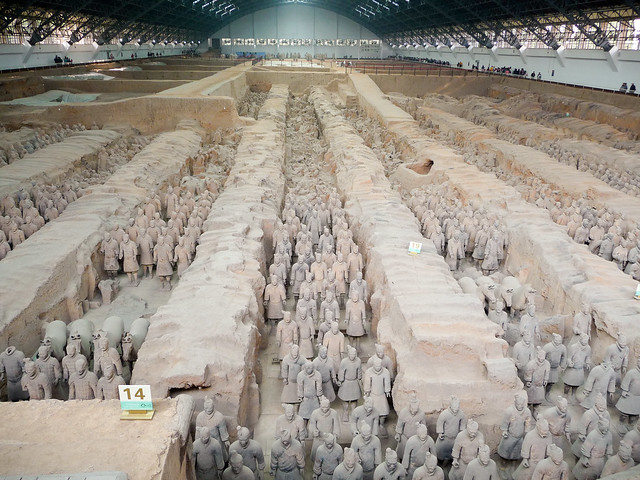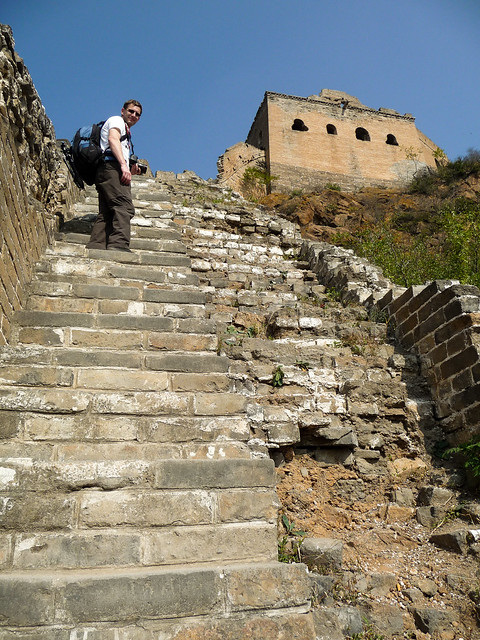We were picked up by the brother of our taxi driver from yesterday at 9 am. He took us to The Army of Terracotta Warriors – known as the 8th wonder of the world. This is a huge archeological site still being excavated, and they have found more than 7000 full sized terracotta warriors and horses. Each soldier is very detailed and they all have individual features, hair and facial expressions.
On the way back to the city center we stopped at two other archeological sites. The Tomb of Qin Shi Huang is believed to be one of the grandest mausoleums ever. The tomb reputedly took 38 years to complete and required a workforce of 700000 people! But it is considered too dangerous to excavate, so there wasn’t really much to see. The Banpo Neolithic Village feature the 6000-year-old ruins of a village, the earliest example of the Neolithic Yangshao culture.
Back in Xi’an we booked a meeting with a travel agent and went for a bike ride on the city walls. They are around 12 meters high, wide and 14 kilometers long. Half way around the wall, we saw very dark smoke coming up from just inside the wall 3 kilometers away, it was a big fire!
At 6 pm we met with the travel agent in the executive lounge and finally managed to arrange our trip to Tibet. It wasn’t cheap but we got it exactly as we wanted. Soft sleeper (which is very difficult to get) on the train from Xining to Lhasa on Sunday, 2 full days for sightseeing in Lhasa and a flight from Lhasa to Chengdu.
We have updated our travel map!


























